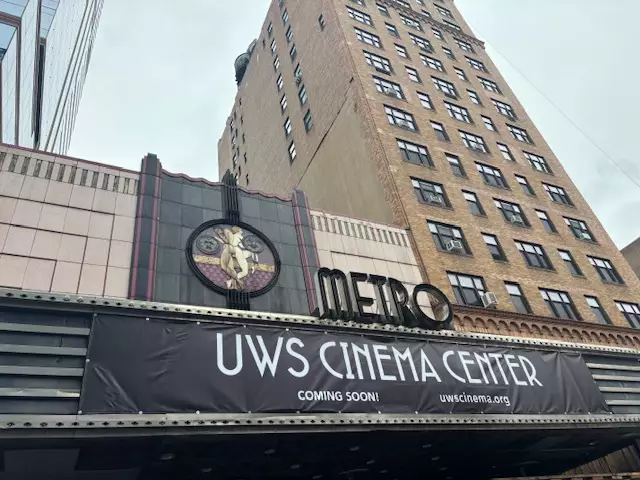The Upper West Side of New York City, known for its artistic and cultural vibrancy, has faced a significant cinematic drought in recent years. The once-flourishing landscape of independent film venues has dwindled, leaving residents yearning for a place to experience the magic of cinema. Enter the ambitious initiative spearheaded by the Upper West Side Cinema Center, which aims to breathe life back into the now-derelict Metro Theater located at Broadway and 99th Street. This initiative represents more than just the restoration of a historic edifice; it embodies a revival of community spirit through the art of cinema.
The vision for the Metro Theater’s resurrection has been reinforced by substantial financial backing from both public sources and private benefactors. Notably, grants from the state of New York, alongside contributions from notable figures such as Kate Capshaw and Steven Spielberg, underscore the vital importance of this cultural endeavor. The Center’s co-founder, producer Ira Deutchman, has passionately articulated the mission: to bring art cinema back to an area that has long been starved for such experiences since the closure of the Lincoln Plaza Cinema.
The Community’s Collective Voice
The fervent support for this project goes far beyond mere financial contributions; it highlights a palpable community desire for revitalized cultural engagement. The initiative has garnered endorsements from esteemed filmmakers—including luminaries like Martin Scorsese and Frances McDormand—who recognize that the fight for theatrical film is deeply tied to the preservation of communal spaces for shared artistic expression. Their involvement, acting as advisors, amplifies the project’s credibility and underscores its potential to reshape the local cultural landscape.
Moreover, the advocacy group’s backing, particularly from organizations such as New Friends of Metro Theater, illustrates a grassroots passion for maintaining the theater as an arts venue. This blend of artistic leadership and community involvement fortifies the project’s foundation, making it a true collaborative effort aimed at rectifying a cultural imbalance in Upper Manhattan.
Dreams Versus Realities: Financing the Future
While the ambitions behind the Upper West Side Cinema Center are grand, the realities of funding such a project are best approached with a strategic mindset. The estimated cost for the restoration and revitalization of the Metro Theater ranges between $15 million and $22 million. This figure encompasses not only the physical restoration of the theater and its iconic façade but also the development of a comprehensive cinematic experience that includes dedicated screening options for classic films, foreign entries, documentaries, and independent productions.
Governor Kathy Hochul’s significant support with a $3.5 million grant has been a game-changer in moving this initiative from concept to reality, highlighting the essential role of governmental support in cultural projects. With the state recognizing the theater as a cornerstone for community engagement, the investment speaks volumes about the potential social returns that such a project could yield.
Yet, one must question if reliance on state funding is a sustainable path for cultural endeavors. There exists a pressing need for a diversified funding strategy that secures additional sources of revenue. The success of similar initiatives in other neighborhoods suggests that a robust donor base, combined with strategic community engagement, is crucial in ensuring long-term viability.
A Hub for Cultural Interactions
Beyond the projected financial aspects, the reinvigorated Metro Theater promises to serve as a bustling hub for cultural interaction. Envisioned not just as a cinema but as a community center, the plan includes an educational facility and a café that opens to the street, enticing both seasoned cinephiles and casual passersby alike. The aim is to create a gathering place where individuals can come together to enjoy films, engage in discussions, and share their unique perspectives—an antidote to the digital isolation that many face in today’s urban environment.
In a city where cultural offerings are as diverse as its residents, the Metro Theater’s revival stands to reclaim public space for collective cinematic experiences. The long-empty building, a tangible reminder of Upper West Side’s once-vibrant cultural scene, is set to transform once more into a beacon of artistic enrichment.
The Broader Cultural Implications
The Metro Theater restoration serves as a powerful symbol in a larger narrative concerning the preservation of local culture in the face of gentrification and digital dominance. As neighborhoods evolve and adapt, there runs a risk of losing venues that foster face-to-face interactions and shared cultural experiences. In this vein, the Upper West Side Cinema Center’s efforts not only aim to restore a theater but also symbolize a profound commitment to community identity and cultural continuity in an ever-changing city.
The future of cinema in the Upper West Side lies in reestablishing connections through shared narratives, cinematic memories, and collective experiences. As construction begins, the excitement surrounding this transformative project represents a pivotal step in reinvigorating a community, ensuring that shared stories endure amid the complexities of modern urban life. The return of the Metro Theater is not merely a matter of reopening doors; it’s about reopening hearts and minds to the magic of film and community.

